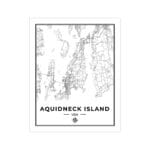Shrouded in perpetual mist, Mount Waiʻaleʻale, Kauai’s second highest peak, boasts a unique ecosystem shaped by extreme rainfall and dramatic geological formations. More than just the “wettest spot on Earth,” Mount Waiʻaleʻale is a sacred place in Hawaiian culture, its summit holding deep spiritual significance for the island’s inhabitants. Join us as we unveil the wonders of this natural treasure, from its challenging hiking trails to its hidden biological gems.
The Rain-Sculpted Landscape of Waiʻaleʻale
Mount Waiʻaleʻale, nestled in the heart of Kauai, isn’t just a mountain; it’s a testament to the raw power of nature. Carved by relentless rainfall and deep faulting, its slopes descend into radiating valleys – Wainiha, Lumahaʻi, and Hanalei – each a testament to the mountain’s enduring influence on the island’s topography. With an average annual rainfall exceeding 373 inches (9,500 mm), and a record-breaking 683 inches (17,300 mm) in 1982, Waiʻaleʻale earns its Hawaiian name, meaning “rippling” or “overflowing water.” This consistent deluge, combined with its volcanic origins and unique geology, has shaped a landscape unlike any other.
A Biodiversity Hotspot: The Alakaʻi Wilderness Preserve
This extreme rainfall nourishes a remarkable ecosystem within the Alakaʻi Wilderness Preserve. Imagine a world of emerald green, where rare plants glisten with perpetual dew, clinging to the steep slopes and thriving in the saturated soil. This boggy, almost otherworldly landscape is a biodiversity hotspot, supporting species found nowhere else on Earth. These organisms, from delicate ferns to resilient shrubs, have adapted to thrive in this perpetually damp environment, a fascinating example of nature’s ingenuity. The very ground, often saturated and challenging to traverse, protects this delicate ecosystem while offering intrepid hikers a glimpse into a truly unique world.
Hiking Through Paradise: Trails and Challenges
The inaccessibility of Mount Waiʻaleʻale’s summit adds to its allure. While reaching the peak demands experience and careful preparation, the surrounding area offers numerous hiking opportunities for all skill levels. The popular Blue Hole Hike, also known as the Weeping Wall Trail, presents a challenging but rewarding trek through lush vegetation and cascading waterfalls. Note that access via Loop Road is inaccessible until at least December 2024. If you want to experience a strenuous but beautiful hiking adventure, you must hike the Rattlesnake Gulch Trail. For a gentler experience amidst towering trees, Sequoia Park offers a variety of easy hiking trails that are perfect for families. Regardless of your chosen path, be prepared for mud, mist, and the very real possibility of being completely soaked – a testament to Waiʻaleʻale’s enduring reputation.
The Wettest Spot on Earth? Unraveling the Myth
Mount Waiʻaleʻale is often touted as the wettest spot on Earth. While its rainfall statistics are undeniably impressive, this claim requires a nuanced perspective. Other locations, such as Mawsynram and Cherrapunji in India, also boast extraordinary rainfall records. The challenge lies in standardizing measurements and accounting for microclimates, which can dramatically influence rainfall totals even within small areas. Waiʻaleʻale’s unique topography, with its steep slopes intercepting moisture-laden trade winds, likely contributes significantly to its high rainfall. Ongoing research continues to refine our understanding of global rainfall patterns, reminding us that even seemingly straightforward questions can have complex answers.
More Than Just a Mountain: A Cultural Touchstone
For the Hawaiian people, Waiʻaleʻale is more than just a mountain; it’s the piko, or navel, of Kauai, a sacred place imbued with deep spiritual significance. This reverence connects the island’s inhabitants to their ancestral past, weaving the mountain into the very fabric of their cultural identity. Stories and legends passed down through generations speak of Waiʻaleʻale’s power and mystery, emphasizing the profound connection between the Hawaiian people and the natural world.
A Glimpse into the Future: Conservation and Climate Change
As our understanding of Mount Waiʻaleʻale evolves, so too does our responsibility to protect it. Climate change presents a significant threat to this delicate ecosystem, with the potential to alter rainfall patterns and impact the unique flora and fauna that call this mountain home. Ongoing research seeks to understand these potential impacts and inform conservation efforts. Responsible tourism, emphasizing Leave No Trace principles, is crucial to preserving Waiʻaleʻale’s beauty and ensuring its continued vitality for generations to come.
Quick Facts about Mount Waiʻaleʻale:
| Feature | Description |
|---|---|
| Location | Central Kauai, Hawaii |
| Height | 5,148 feet (1,569 m), second highest peak on Kauai |
| Summit | Kawaikini (5,243 ft/1,600 m), highest point on Kauai |
| Annual Rainfall | 373+ inches (9,500+ mm), with a record 683 inches (17,300 mm) in 1982. |
| Climate | Tropical rainforest (Köppen Af) |
| Ecosystem | Alakaʻi Wilderness Preserve, a unique high-elevation bog |
| Hiking | Blue Hole Hike (Weeping Wall Trail), challenging but rewarding; summit hike requires experience |
| Cultural Significance | Considered the piko (navel) of Kauai, holding spiritual significance for native Hawaiians |
| Name Meaning | “Rippling water” or “overflowing water” |
Mount Waiʻaleʻale stands as a powerful symbol of the interplay between geology, climate, and culture. Its persistent rain, while challenging, is also the source of life, shaping a landscape of breathtaking beauty and fostering a unique ecosystem that continues to captivate and inspire. While the debate regarding the “wettest spot” continues, one thing remains certain: Mount Waiʻaleʻale is a treasure worth exploring, a testament to the enduring power and wonder of the natural world.













